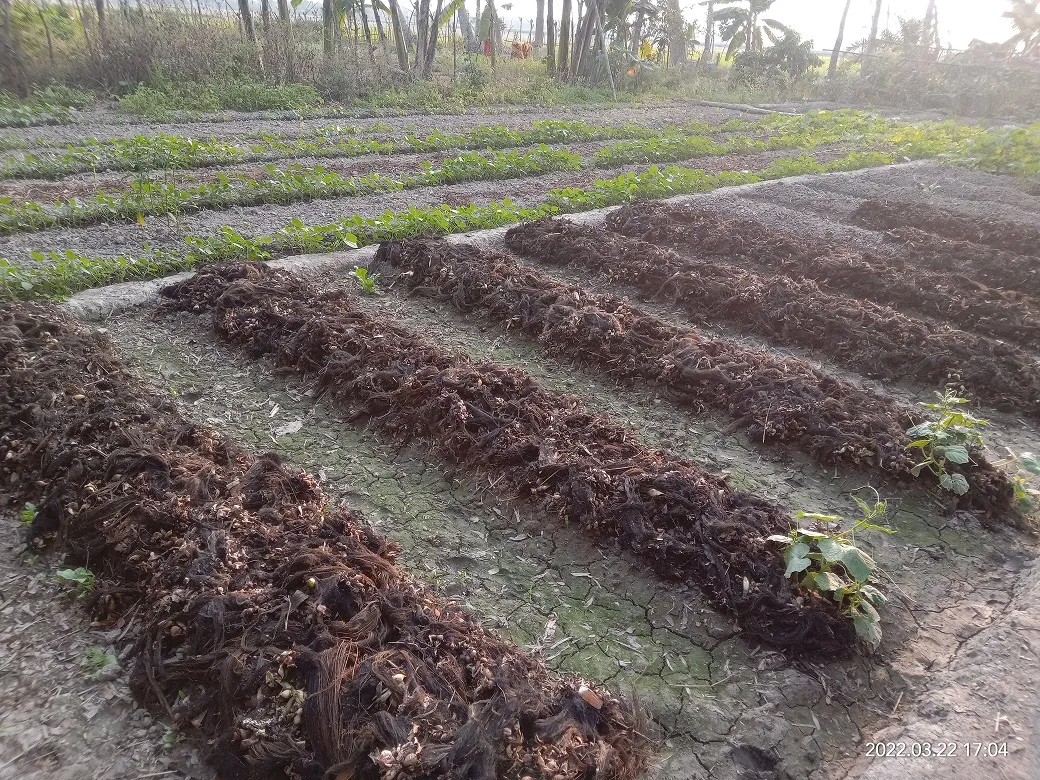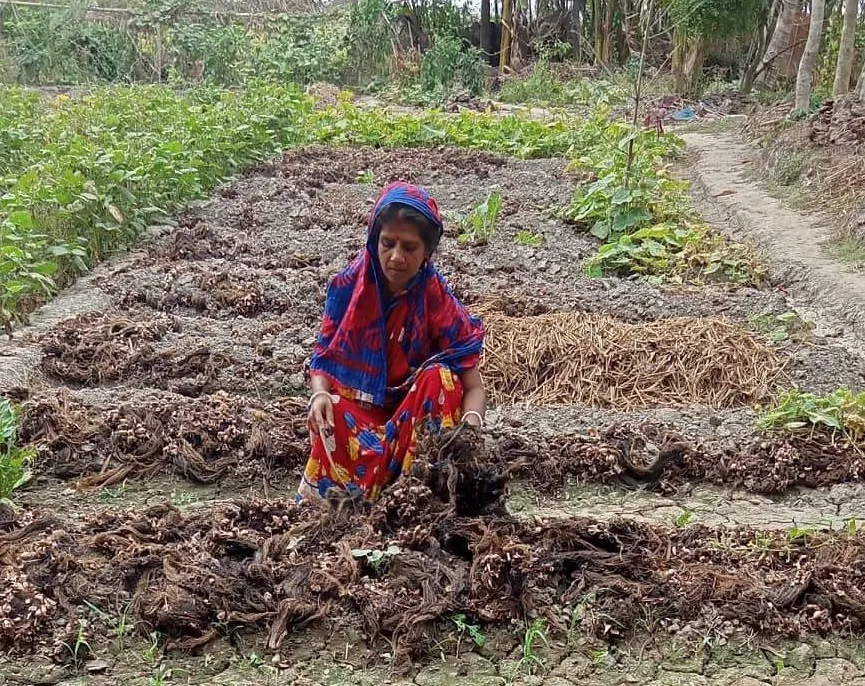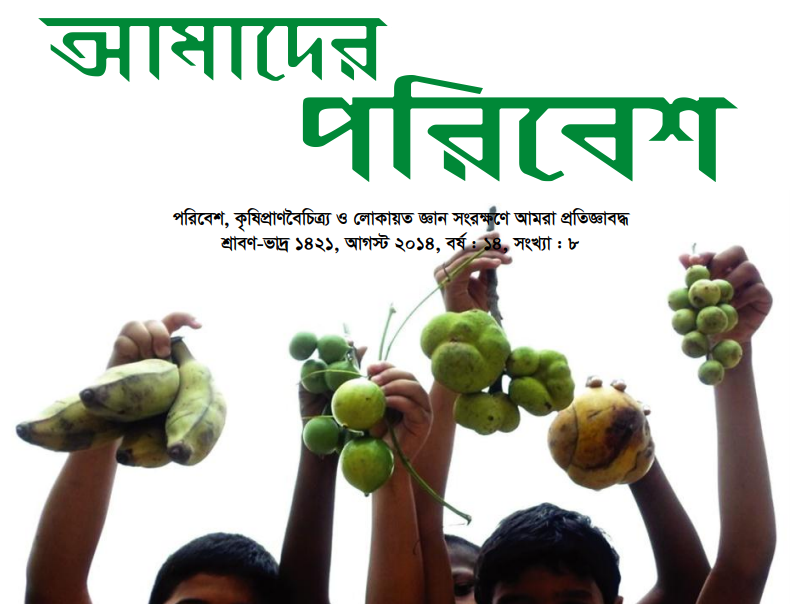Monica Pike from Satkhira, Shyamnagar
The farmers in the rural areas have been producing different crops and grains using their indigenous knowledge. Many farmers in rural areas still have a variety of indigenous seed varieties which they have been conserving for years to farm in their lands keeping the soil fertile and moist.

One such women farmer is Lakshmi Rani Mandal. She lives in Badghata village of Shyamnagar upazila in Satkhira. She has been collecting, storing and cultivating local taro seeds along with other seeds for about 10 years. Like every year, this year too he has planted this taro.
When asked about the timing of taro cultivation, seed conservation and attack of insects and diseases, Lakshmi Rani said, “It is more profitable to cultivate taro than other vegetables in our area.” There is no pest infestation, the disease is less and even goats do not eat this tree. It is during the month of Falgun or Chaitra (February-March) when one can get good yield cultivating taro.’ She added, ‘High lands are suitable for taro cultivation. It is not good to have shade during the cultivation of this vegetable. Taro is usually harvested from the land in the month of Karthik Agrahayan (October-November). I collect the heads that grow around this vegetable for later plantation.’
Lakshmi Rani said, ‘When planting taro, we make high pile with dung manure around the wheel and cover it with soil. When it is covered, we soak it well inside the hole. I cover the hole a little while covering the pile. Because, many times rain water accumulates and the mill of taro rots. If it is high, rain water cannot trickle down. It takes a long time for the seedlings to come out of the mill and it also takes more water. So it is better to cover it with water hyacinth at this time. In this way, it can hold the moisture of the soil.’

Lakshmi Rani said that she used to cover the taro with straw after planting last year, so that the straw would dry and crumble in the heat of the sun and when it got wet in the rain, it would rot and prevent the taro from coming out. So this year she has cultivated taro with a new way covering the farming land with water hyacinth instead of straw. After watering the water hyacinth, she saw soil moisture on the land remains for several days. Thus, she does not need to water the vegetable every day. Besides, water hyacinth serves as fertilizer for the land after getting rotten. That is why she does not need to apply much fertilizer in the lands as well. Moreover, after the seedlings emerge, the water hyacinth is slightly loosened near the mouth and covered so that the leaves can spread well on the soil.
The climate is constantly changing. With this change, the rural people are making various efforts using their indigenous knowledge, experience and skills. The success of Lakshmi Rani will inspire others to farm crops using the indigenous knowledge which has been proved to be one of the techniques to cope with the change of climate.
Translated by Silvanus Lamin

